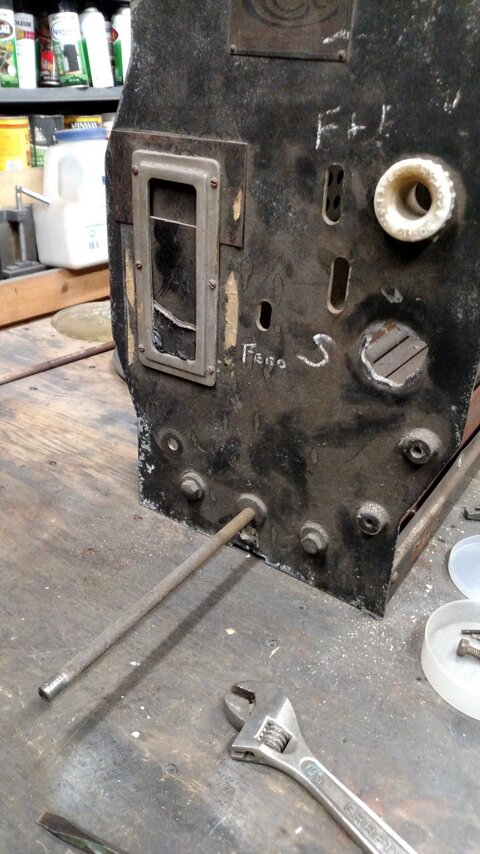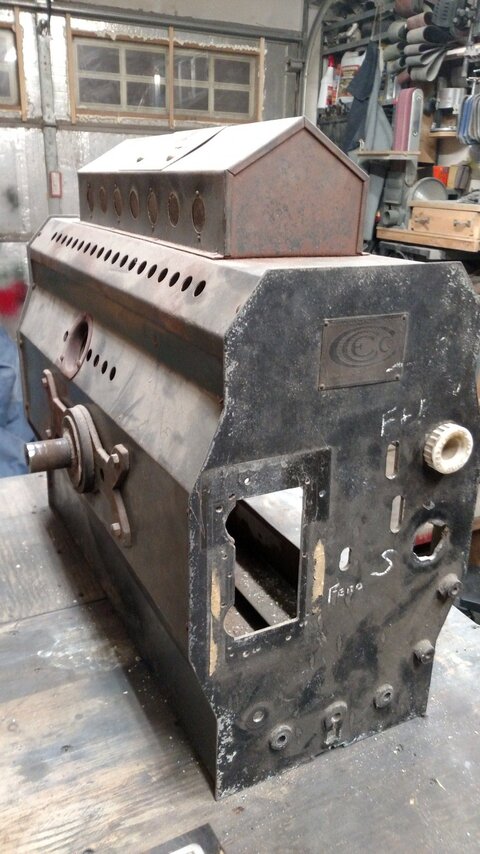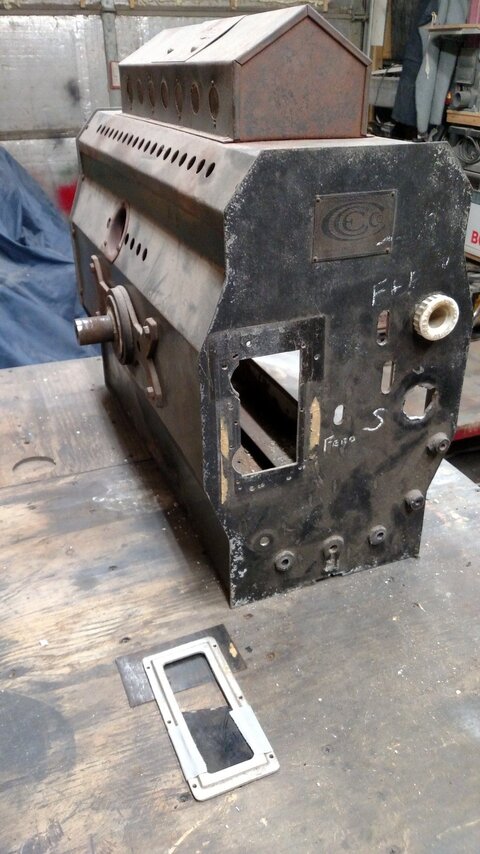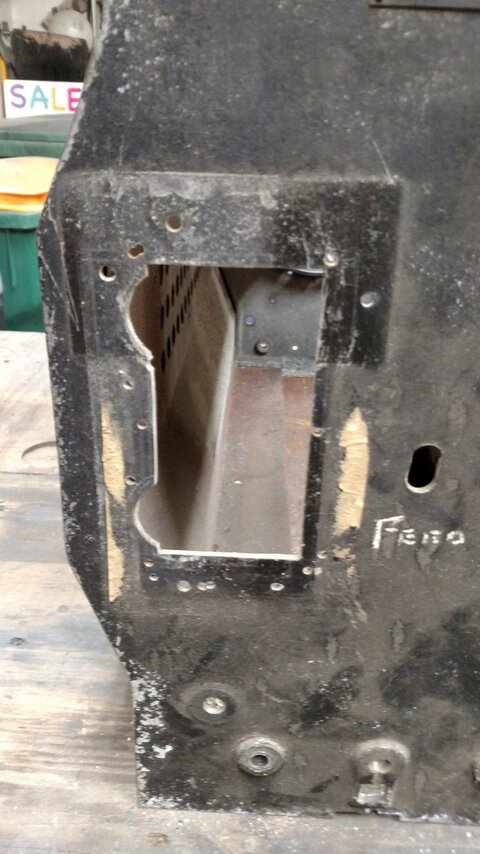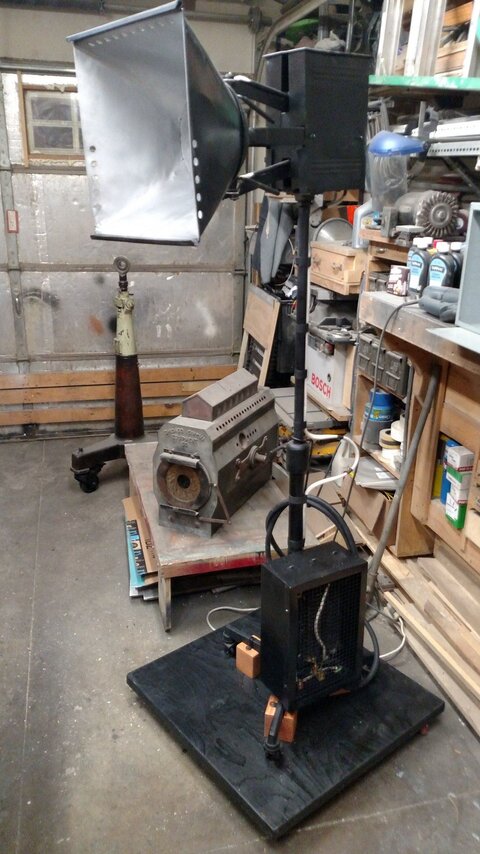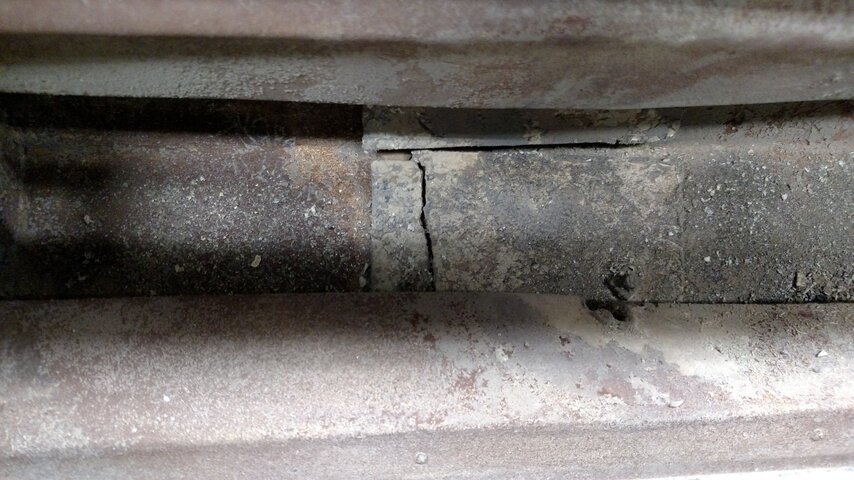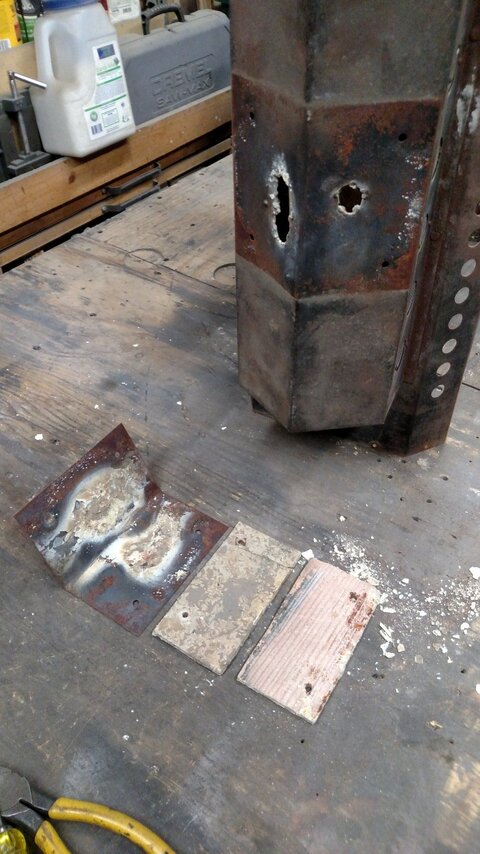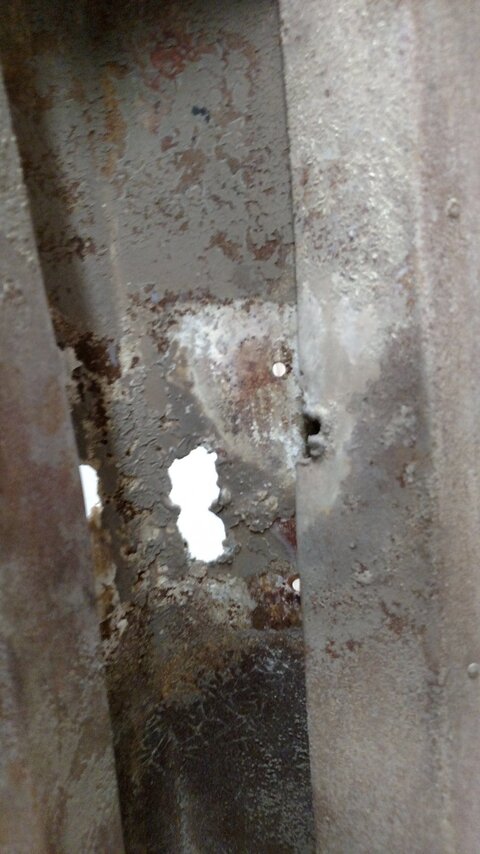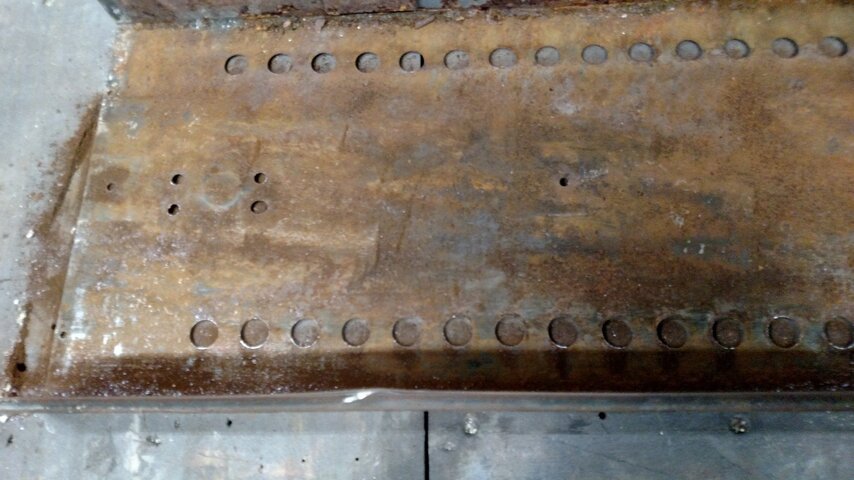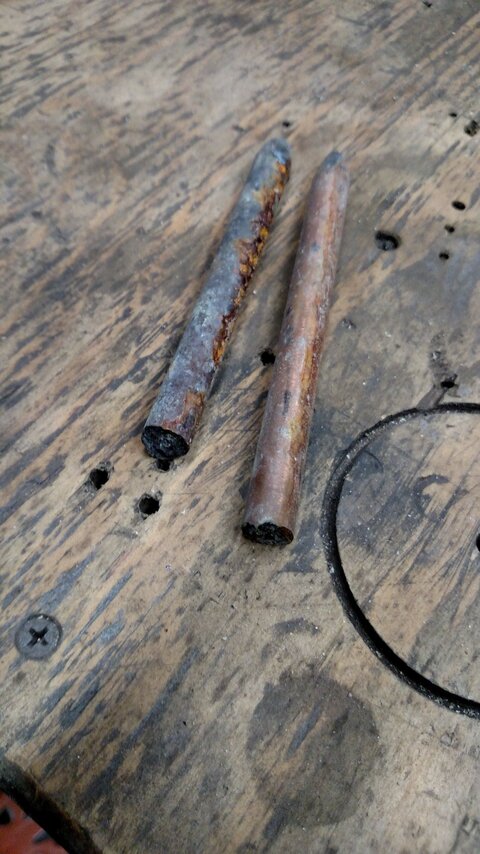Onto the c.1909 Followspot. A 6" carbon arc Chicago Cinema Equipment carbon arc follow spot (Also called a "Lens Box" or "Chaser" - Season 1916-1917 Chicago Stage Lighting Co. Catalogue.) The Chicago Cinema Equipment spotlight has a serial number of 23. That’s early assuming also a 1909 date.
Came from a 1929 opened (after the stock market crash) Vaudeville/movie house still operating which in it’s history page denotes right before it opened, they had to cut the budget a lot. (The movie projectors are rusting away in the basement if anyone is interested.)
My notes cite a 1920 List of Corporations book citing CCE’s existence of 3535 W. 12th St. Chicago, IL. When I saw the fixture, I knew it was much older than 1929'. The theater Manager thought it might have come from the DeKalb Opera house - which burned down at some point. Working with a few theater’s and museums to get this part of the history and my local lore at this point.
Onto the fixture...
Would seem first by the porcelain cord bushing - one not removable due to badly cut hole, & the hole below it in I thought plasma cut, but instead a lot of drilled holes + different writings on the bushings, but similar style/old, - this was a later c.1929 change of location to the cord bushings & one perhaps had broken with a replacement.
Why did they move the cord grip bushings? Someone wanted a wider view screen so as to adjust the carbon arc. Note the solute if a of a plate added to mount the rear lens, than later it’s modification so as to adjust for the broken lens. And the cracked lens with something like tar attaching a gel of some form to it either during the time or later/later.
Why someone would want a wide view screen lens added to the non-operator side of the spotlight, when you have two view screens from the sides of the fixture... don’t know. But clearly the positions of the cord bushings were changed given the rectangular hole with somewhat circular holes cut into it. Though not certain on it - they are cut not really round holes either = not cast ones normal as will have been done. See some burnt in masking tape also, could be from after the lens broke & gel was added / third renovation to the fixture.
Curious all the bullet (drilled holes) about this rear view screen.
Still having the feed in cords in front of the active - followspot operator control levers for the spot does not make sense. Somewhat as theorized in c1929 added the large rear viewing lens as a modification perhaps for local not as well trained local crews. Makes sense.. No IA’ in DeKalb Illinois back in 1929 I suspect.
Restoration going especially well/normal. As opposed to the last fixture.... so far no seized fasteners that could not be worked with easily. Yet to get to the arch mechanism which came out in easily removable parts - other than a spatter weld from a carbon drip which arched to a focus slide rod. Filing would not remove it, had to grind it away.... should have vacuumed the fixture first.... note for next time given the cloud of stuff blown up from the grinder.
Hope to preserve but retain patina on this light. Sorry I didn't take a lot of full photos before starting. Did take a lot this time of photos of what was where which would not be interesting but might be very important in re-assembly. In the background to the last photo is it next.
Came from a 1929 opened (after the stock market crash) Vaudeville/movie house still operating which in it’s history page denotes right before it opened, they had to cut the budget a lot. (The movie projectors are rusting away in the basement if anyone is interested.)
My notes cite a 1920 List of Corporations book citing CCE’s existence of 3535 W. 12th St. Chicago, IL. When I saw the fixture, I knew it was much older than 1929'. The theater Manager thought it might have come from the DeKalb Opera house - which burned down at some point. Working with a few theater’s and museums to get this part of the history and my local lore at this point.
Onto the fixture...
Would seem first by the porcelain cord bushing - one not removable due to badly cut hole, & the hole below it in I thought plasma cut, but instead a lot of drilled holes + different writings on the bushings, but similar style/old, - this was a later c.1929 change of location to the cord bushings & one perhaps had broken with a replacement.
Why did they move the cord grip bushings? Someone wanted a wider view screen so as to adjust the carbon arc. Note the solute if a of a plate added to mount the rear lens, than later it’s modification so as to adjust for the broken lens. And the cracked lens with something like tar attaching a gel of some form to it either during the time or later/later.
Why someone would want a wide view screen lens added to the non-operator side of the spotlight, when you have two view screens from the sides of the fixture... don’t know. But clearly the positions of the cord bushings were changed given the rectangular hole with somewhat circular holes cut into it. Though not certain on it - they are cut not really round holes either = not cast ones normal as will have been done. See some burnt in masking tape also, could be from after the lens broke & gel was added / third renovation to the fixture.
Curious all the bullet (drilled holes) about this rear view screen.
Still having the feed in cords in front of the active - followspot operator control levers for the spot does not make sense. Somewhat as theorized in c1929 added the large rear viewing lens as a modification perhaps for local not as well trained local crews. Makes sense.. No IA’ in DeKalb Illinois back in 1929 I suspect.
Restoration going especially well/normal. As opposed to the last fixture.... so far no seized fasteners that could not be worked with easily. Yet to get to the arch mechanism which came out in easily removable parts - other than a spatter weld from a carbon drip which arched to a focus slide rod. Filing would not remove it, had to grind it away.... should have vacuumed the fixture first.... note for next time given the cloud of stuff blown up from the grinder.
Hope to preserve but retain patina on this light. Sorry I didn't take a lot of full photos before starting. Did take a lot this time of photos of what was where which would not be interesting but might be very important in re-assembly. In the background to the last photo is it next.
Attachments
Last edited:



